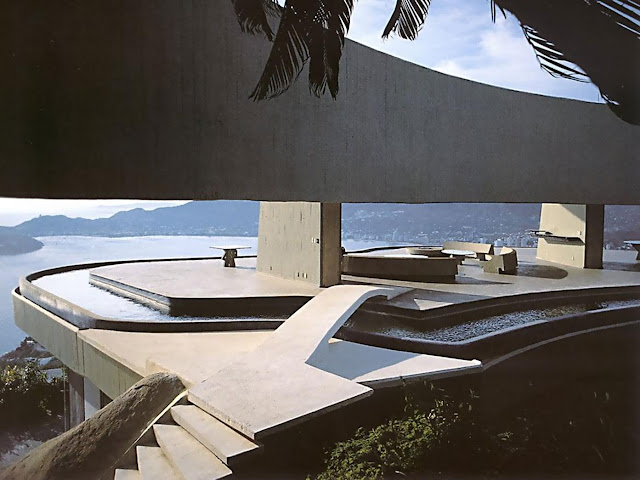Monuments of architecture and creators of the transcendence - John Lautner (part 2)
(Images from Wallpaper.com)
Futures rarely turn out as people envision them to be, writers, artists, designers and architects instill a possibility and build into that concept of what may be perceive as a future reality, in sentiment, sometimes they get it very right, in structure and technology no so much. But, it helps when surrounded by modern and contemporary concepts of architecture for most of your life such as the famous modenist architect John Lautner (1911-1994). His father John was a university lecturer and mother Vida Lautner, a painter and interior decorator who both showed an admiration for architectural design – this is where a young Lautner begins to formulate the idea of what modern and future design could entail. And he knew at early stage in his career, the only way a modernist design that evokes thoughts of future world could be created, beyond any post modern elaborative concept. Was to design purely for an exclusive portfolio, Lautner built the backdrop for a future that never was, yet as an idea of desired wealth and power, his futuristic styled buildings have been used countless times In Hollywood productions.
John Lautner became an apprentice under the notable Frank Lloyd Wright and in 1938 he leaves the Lloyd Wright mentoring program to establish his own firm in Los Angeles, you can see that immediately upon graduation and moving away from mentor program under LIoyd Wright, Lautner begins to set in place very quickly his clientèle, using the broad and expansive backdrop of Los Angeles to influence his very exclusive modernist take, that if one is to look at the sprawling suburbs of Los Angeles, on its iconic mid centuary design. The flat-roofed houses, clean shapes and manicured and defined gardens or set within their modernist pose. This was due to the imprint of hope and prosperity after Word War Two and America was booming, the only country left untouched, structurally, after the war – its industries revved up to fill the gap of a destroyed Europe after their infrastructure, factories, productivity and even dreams were decimated. All in need of rebuilding and America was given the job to create a redesigned Western World. The epicenter of this dream was 1950s Los Angeles as we entered what was seen as a clean and efficient atomic age; the nuclear family. The productivity and ability of technology to solve the problems of yesterday, a Future had arrived, yet we know now it was all but an illusion of grandeur. A moment in time that was set in place to express the greatness of American innovation and design, yet it came with a cost that most Americans wouldnt be able to afford even in that time of prosperity. For Lautner, this was not an indication to build a mass array of his designs for the residents of Los Angeles, rather he was inside the circle of Hollywood elites at the time – he became their architect. Lautner turned, with their wealth, dreams into reality. And yet that reality was only a dream for the majority who viewed the exclusive as a projection of fantasy, sold to them via the silver screen."





Comments
Post a Comment